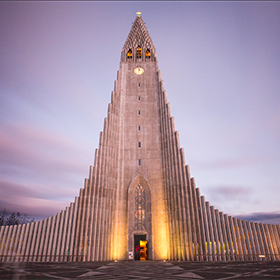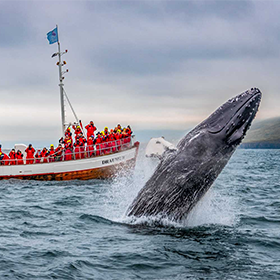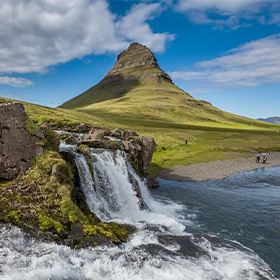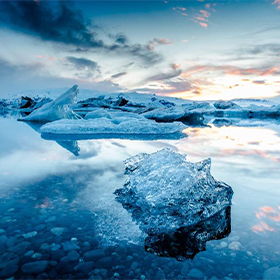THE LAND OF FIRE AND ICE
Iceland is a country of extreme contrasts and dramatic landscapes. Widely known as "the land of fire and ice," Iceland is home to some of the largest glaciers in Europe and some of the world's most active volcanoes.
SAFETRAVEL
Is Iceland a safe country? Actually, it is hard to feel any safer than here: Iceland is a country with one of the world’s lowest crime rates, ranking consecutively in 1st place on the Global Peace Index, and home to no animal predators dangerous to man. So, it doesn’t seem very dangerous, but the challenges lie elsewhere.
The Aurora
The extreme dark of the Icelandic winter has a few perks. Between September and April, the people in Iceland are treated to a magnificent natural display: the phenomenon of aurora borealis, or what we commonly call the Northern Lights.
THE WONDERS OF ICELAND
Iceland is typically divided into seven different geographical regions. Each region differs slightly regarding culture and landscapes, but all are uniquely Icelandic. The regions are South Iceland, East Iceland, North Iceland, the Westfjords, West Iceland, Reykjanes, and Reykjavík capital area.

Reykjavík
Reykjavík is the natural starting point for any visit to Iceland, and not undeservedly so. The capital is world-renowned for its culture, history, and natural beauty on all fronts.

The North
The North of Iceland truly is a land of contrasts. Its long valleys and peninsulas are interspersed with mountains, lava fields and smooth hills carved out by rivers. The deep and numerous indentations in the coast of the North are at times lush with vegetation, at others barren. As one nears the Arctic Circle in the Northern latitudes, the midnight sun is invariably awe-inspiring.

The West
West Iceland is one of Iceland's most geologically diverse regions. Its natural wonders are a nearly exhaustive sampling of all that Iceland offers, ranging from slumbering volcanoes and majestic waterfalls to various flora and wildlife.

The South
Iceland is a country full of geological contrasts and they are best visible in the South, where geothermal heat meets glacial cold. In the Southwest and the Golden Circle Area, the heat is on, providing the energy for Iceland’s many greenhouses and swimming pools. The Southeast shows off Europe’s biggest glacier Vatnajökull, spectacular waterfalls, and black sand beaches on which the powerful waves of the North Atlantic break.